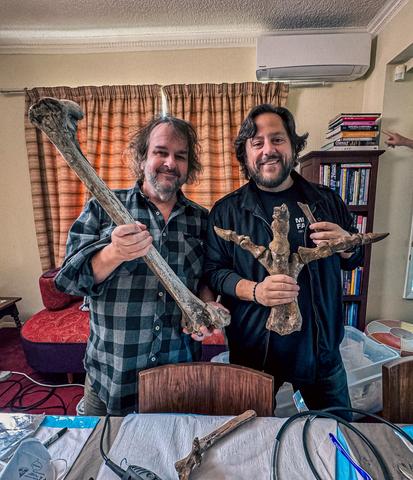| IN A NUTSHELL |
|
Colossal Biosciences, a company known for its groundbreaking de-extinction projects, is embarking on an audacious new venture: the potential resurrection of New Zealand’s mighty moa. These flightless giants roamed the islands until around 1400, when human activities led to their extinction. Today, Colossal aims to not only bring back these incredible creatures but also spark an ongoing conversation about the ethics and feasibility of such endeavors in the scientific community. With advancements in genetics and a commitment to collaboration, this project could redefine our understanding of biodiversity and conservation.
Colossal Biosciences and Their Bold Vision
Colossal Biosciences has already made waves with its ambitious attempts to resurrect the woolly mammoth and the dodo. Now, the company sets its sights on the moa, a colossal bird that once towered over the landscapes of New Zealand. The moa represents not just a scientific challenge but a cultural symbol of the country’s lost natural heritage. Standing over 11 feet tall and weighing up to 500 pounds, the moa was much larger than the modern ostrich, which itself is a formidable bird.
To achieve this vision, Colossal plans to work closely with indigenous groups, researchers, and experts. The company has joined forces with the Ngāi Tahu Research Centre at the University of Canterbury. Their immediate goal is to sequence the genomes of all nine species of moa using ancient bones. By leveraging these genetic blueprints, Colossal hopes to recreate the moa by altering the DNA of its closest living relatives, such as the tinamous of Central and South America or the Australian emu. The completion of these genomes is expected by the summer of 2026, marking a pivotal step forward in the project.
The Science Behind De-Extinction
The process of de-extinction involves complex genetic engineering techniques. For the moa, these techniques will involve altering the genome of related living species to match that of the extinct bird. This is similar to the approach used in other de-extinction efforts, where scientists utilize the closest relatives to resurrect species. For instance, the Nicobar pigeon is being studied to help bring back the dodo. The chief scientist at Colossal, Beth Shapiro, has emphasized the importance of identifying what made the moa genetically unique by comparing its DNA sequences to those of existing bird species.
One of the unique challenges in avian de-extinction is the development of bird embryos within eggs, which differs significantly from mammalian embryonic development. This requires innovative approaches to embryo transfer and genetic manipulation. Despite these hurdles, the project has garnered significant interest and funding, including $15 million from renowned filmmaker Peter Jackson and his partner Fran Walsh. Jackson’s personal collection of moa bones underscores the cultural and scientific fascination with these ancient creatures.

Ethical Considerations and Scientific Debate
While the prospect of bringing back the moa is thrilling, it reignites ethical debates within the scientific community. Critics argue that creating an animal that merely resembles an extinct species may not equate to a true revival, as the original behaviors and ecological roles of the species are unknown and cannot be recreated through genetics alone. Conservationists also question whether de-extinction diverts resources from existing efforts to protect endangered species.
Colossal’s previous project on dire wolves has faced similar scrutiny. Although the company successfully modified gray wolf cells to exhibit dire wolf-like traits using CRISPR technology, many scientists remain skeptical about the implications of such genetic modifications. The debate continues as to whether de-extinction serves as a genuine conservation tool or a distraction from pressing environmental challenges. Nonetheless, Colossal’s endeavors highlight the potential of genetic technologies to revolutionize our approach to biodiversity.
Looking to the Future
As Colossal Biosciences progresses with its moa project, it promises to reshape our understanding of ecology and conservation. The collaboration with indigenous communities and the scientific community underscores a commitment to ethical and sustainable practices. The eventual goal is to reintroduce the moa into the wild, restoring a lost piece of New Zealand’s natural heritage.
In the face of unprecedented environmental challenges, the possibility of de-extinction offers both hope and controversy. Will these scientific advancements lead to a new era of biodiversity restoration? Or will they raise more ethical questions than solutions? As we stand on the brink of potentially witnessing the return of the moa, the world watches with anticipation. What other species might science bring back from extinction, and how will these efforts shape the future of conservation?
This article is based on verified sources and supported by editorial technologies.
Did you like it? 4.5/5 (30)





